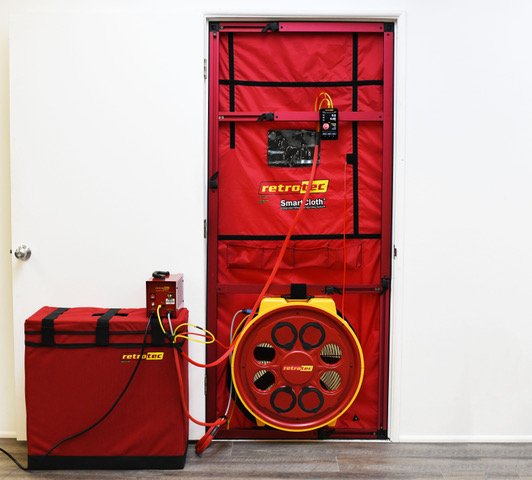
Blower Door Testing.
Blower Door Testing is a powerful diagnostic tool that uses a fan to create a pressure difference between the inside and outside of a building. By measuring the air pressure and the rate of air flow, we can determine the air permeability and airtightness of the building envelope.
Continued Stricter Building Standards
In response to the growing concern about energy efficiency and climate change, building standards have been getting stricter over the years. As a result, many buildings are being designed and constructed to higher standards of energy efficiency, such as Passive House.
These standards require much lower air permeability than in the past, typically less than 0.6 cubic meters per hour per square meter at 50 Pascals. Blower door testing is an essential tool for ensuring that buildings meet these rigorous standards and perform optimally. We are approved to work with SEAI grants too, so get in touch an discuss your requirements.
More about our
Blower Door Testing service.
-
NZEB limits are set at 5 cubic meters/hr.sqm @ 50 Pascals. This standard sets a maximum limit on the amount of air leakage that is allowed in or out of a new building. Passive house standards are set at 0.6 or lower.
-
We use the Retrotec Fan systems.
-
Our Retrotec blower door fan system is mounted in an exterior door, and all other openings are sealed. The fan is used to both pressurise and depressurize the building, causing air to be drawn in through any leaks in the building envelope.
-
An air flow meter measures the amount of air being pulled in or out of the building, which allows us to determine the air infiltration rate.
-
Generally tests are usually carried out 2-3 times over the construction of a building. The first test once the airtight membranes have been fitted and sealed and before any 2nd fix works are carried out. It’s always easier to repair and seal up any areas before the airtight membranes have been covered. Nominating an Airtightness Champion and repair procedure should be considered.
-
The final test is carried out at 6 x Positive pressure and at 6 x Negative pressure. The results of these tests will establish if NZEB standards have been met or exceeded.



